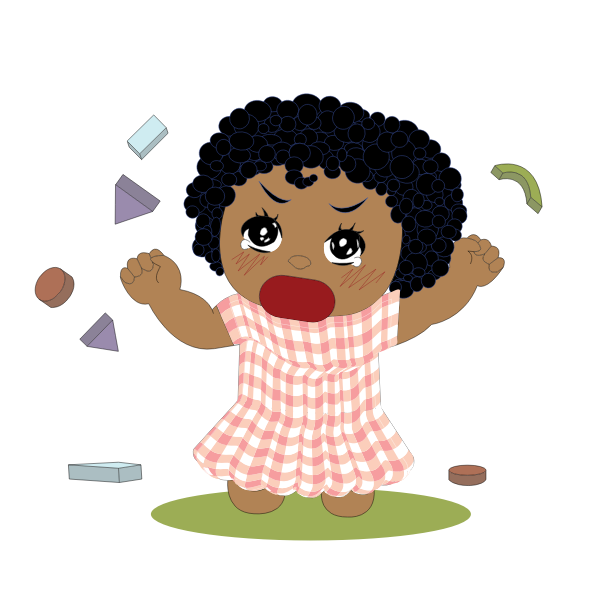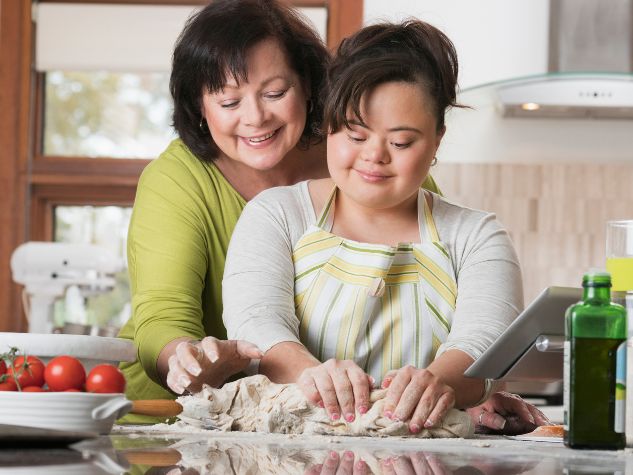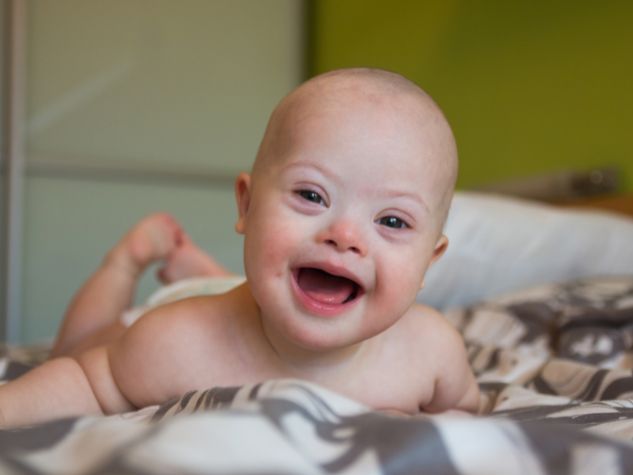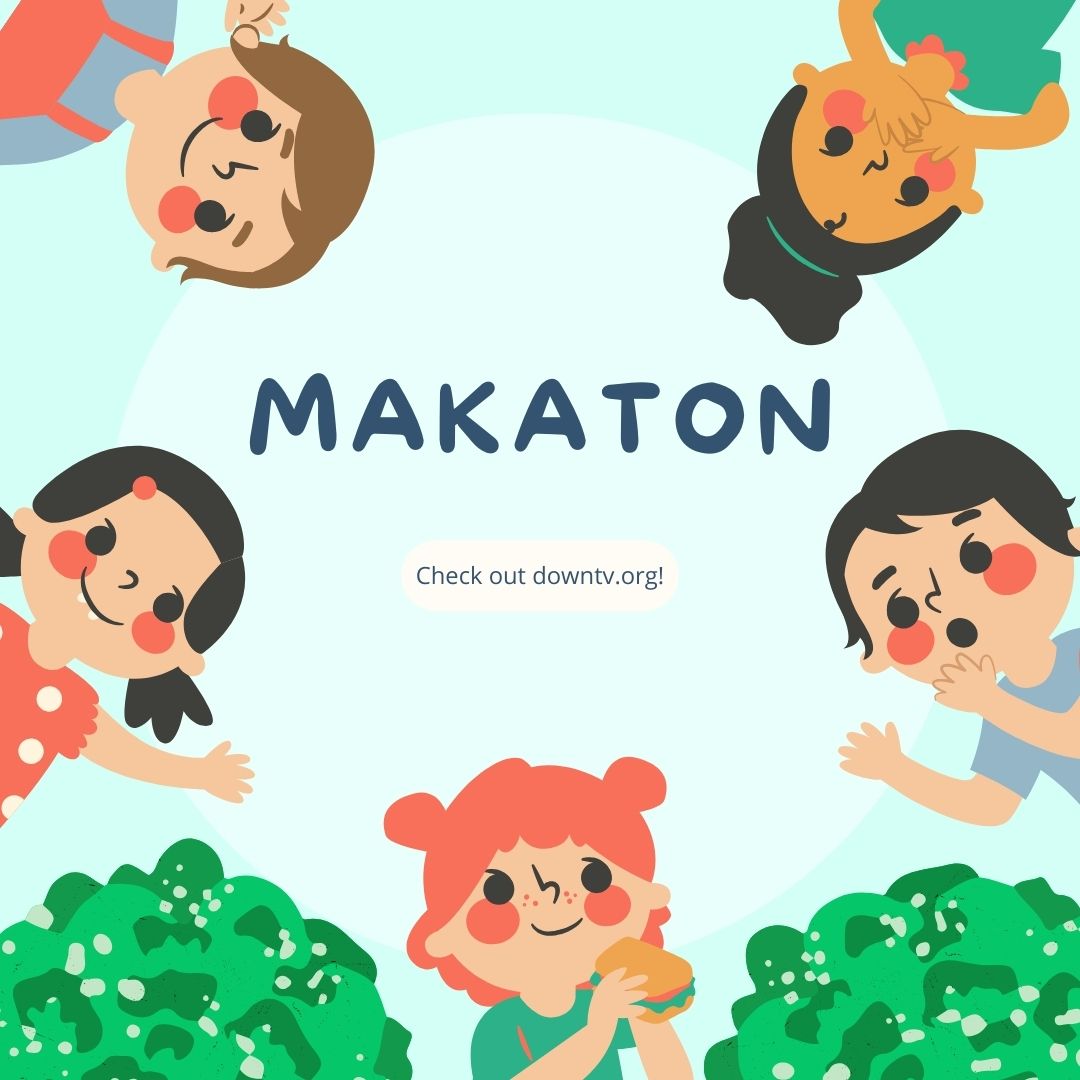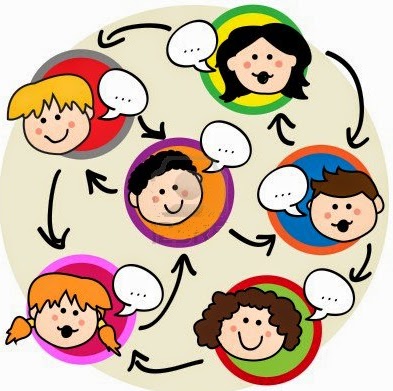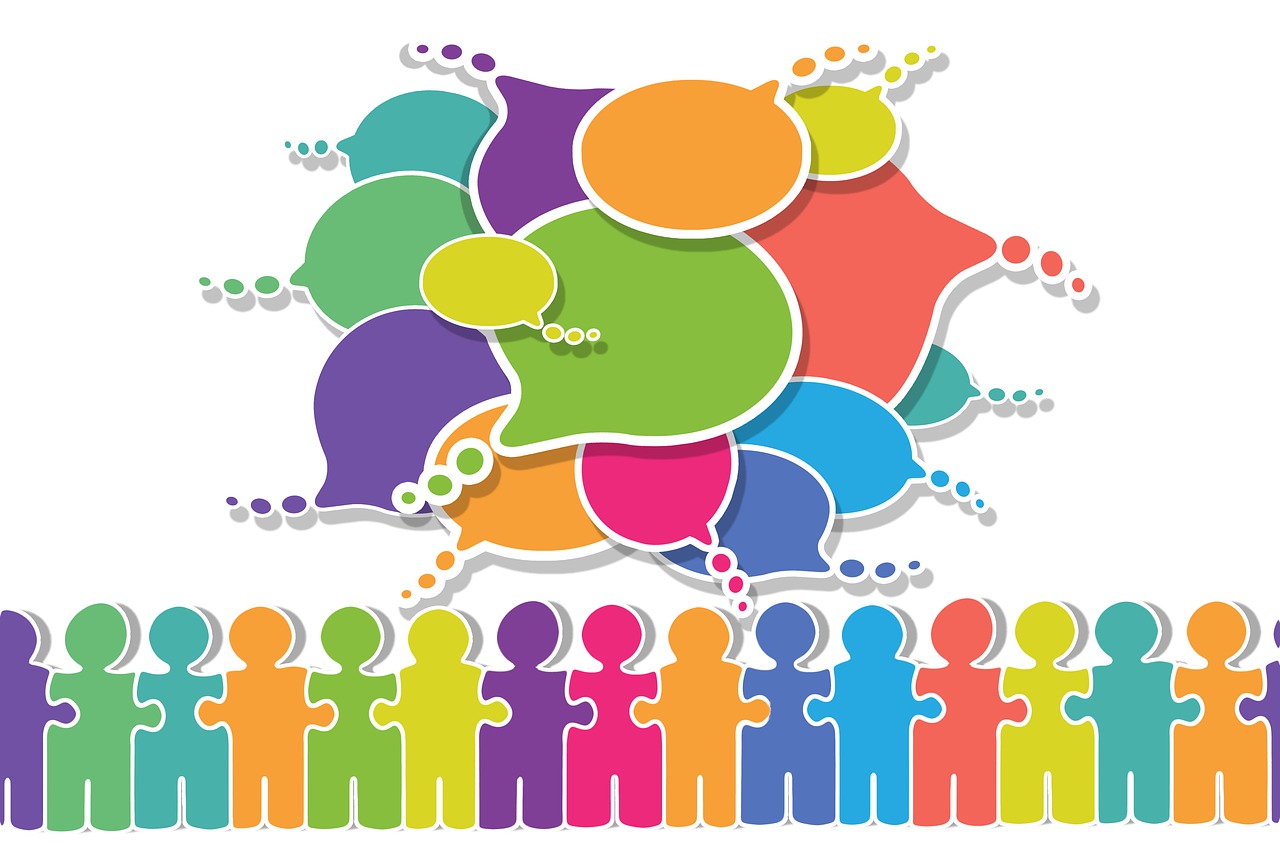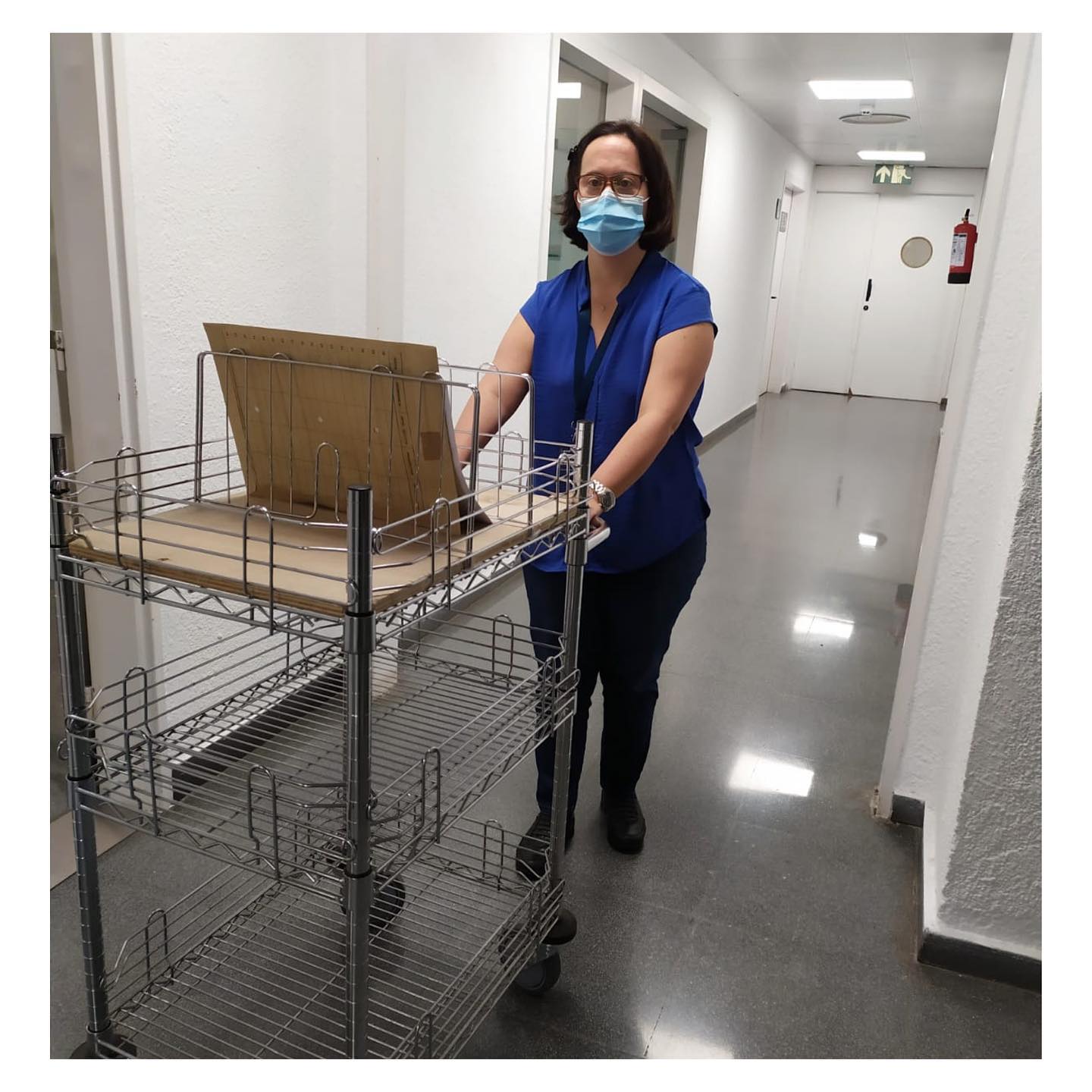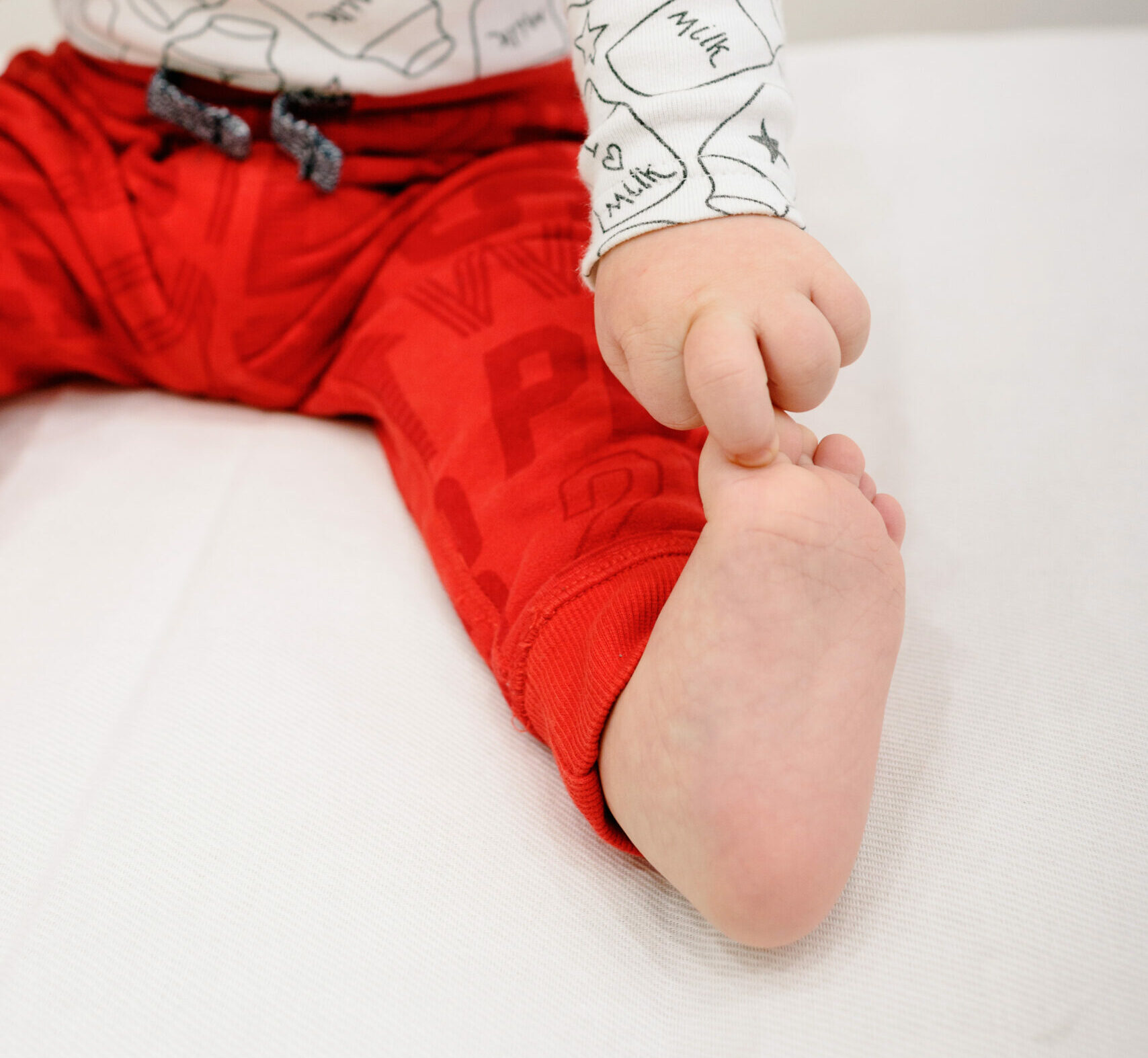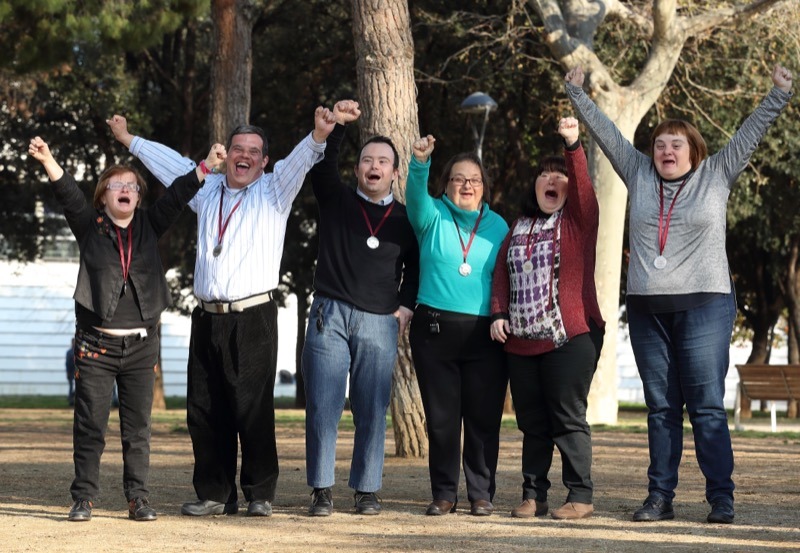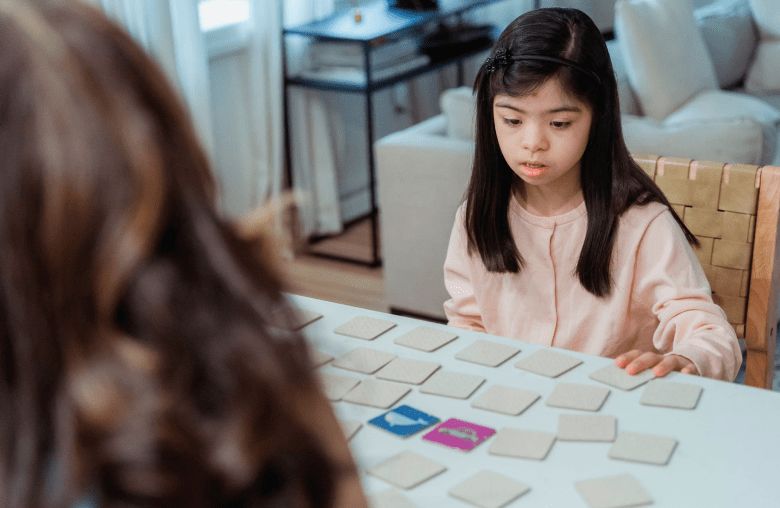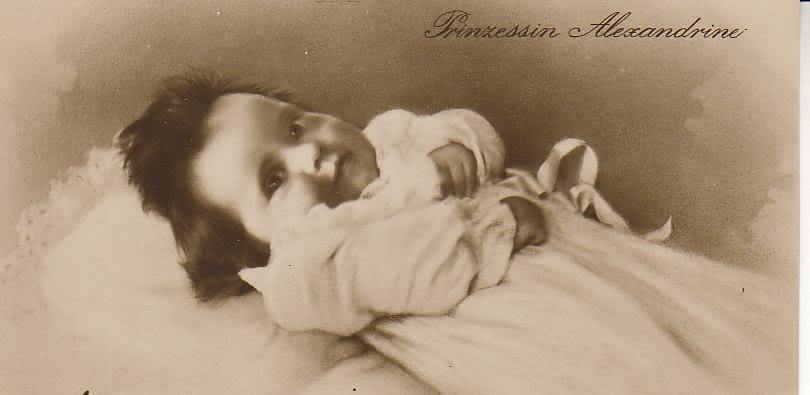Behavioural problems are the biggest problem when it comes to achieving social inclusion, and they tend to be a major concern for parents. In this article we are going to see what we can do to try to solve the behavioural problems of our children with Down’s syndrome:
First of all we must change the focus of attention. We must understand and comprehend the behavioural problems. During the different developmental stages, some behaviours seem inappropriate from an adult’s point of view, but they are necessary for the development of children’s personality and the acquisition of self-control skills, frustration tolerance, problem resolution…
What are behavioural problems?
We talk about behavioural problems when there occur four conditions:
- Developmental stage: they are explained by the conditions of the evolutionary stage (age of development) of the person. For example, in the first years of life tantrums appear, but this is something that no longer occurs in adolescence.
- Frequency: Excessive frequency.
- Time: Persists over time in a stable manner.
- It affects the child’s development: It affects negatively the person who manifests it, interfering in their personal, family, social, curricular, etc. development.
How to understand behavioural problems?
Children do not deliberately misbehave. Behind a child with behavioural problems there is a child who suffers, there is a behaviour that separates him from his friends and family. No child would choose to have behavioural problems.
Children with behavioural problems have difficulties in the area of social skills and in the handling and management of emotions that help us to be tolerant, patient and give us the ability to avoid explosive behaviour. Behind a behavioural problem there is always a need. With his or her behaviour the child is telling us that something is wrong, that he or she needs something and that he or she needs help to do it better.
All children need to belong and feel important. Children can easily meet that need inappropriately through disruptive behaviour. Disruptive behaviour is an opportunity to teach social, emotional and life skills that will help them become capable, responsible, and happy adults.
There are two ways of looking at disruptive behaviour:
- When we analyse only the behaviour and we are stuck only with the tantrum, the disobedience, the non-compliance with the rules. In this case there is only blame and punishment.
- The second way goes beyond the behaviour and tries to understand what is behind these behaviours: there is a cry for help from our son or daughter. We want to listen, understand, comprehend and learn.
When there are behavioural problems, the focus is usually on the children. But we need to stop focusing on them changing and look at ourselves as adults. What is my attitude towards my child’s behavioural problems? How do I manage them? How do I act?
As parents we care for them, we look after them, we love them, but we also have to teach them how to live and educate them to be a member of society. If we ask ourselves this question, what does your child need to learn from you? They need to trust you and through that trust they need to feel secure and capable.
To meet and respond to the needs of our children we must follow 3 steps:
1st step: know and appreciate all the aspects that define our children’s personality: the time they spend active/inactive. How their response initiates, how they react to new people, objects, situations, places… how they react to changes. To know their moods, the intensity of their reactions, their capacity for distractibility, their attention span…
2nd step: Challenges and Skills: List the behaviours that worry you. Analyse what feelings are triggered by these behaviours and the reactions (what we do) to the problematic behaviours. Put yourself in their shoes. This will allow us to understand how our feelings and behaviours can provoke or reinforce the inappropriate behaviours we want to change.
Create your roadmap: the list of challenges and life skills: responsibility, self-control, cooperation…
3rd step: understand your child’s behaviours and then give a response. Often we give an answer without understanding our child’s behaviour, without understanding how their brain works. For this it is important to take into account how the brain works.
The brain is made up of 3 parts:
Cognitive brain: This is the prefrontal cortex, responsible for thinking.
Emotional brain: This is the limbic system, responsible for emotions.
Instinctive brain: This is the most primitive part of the brain, which regulates vital functions and survival-related behaviour (attacking, fleeing, paralysing oneself, etc.).
When we feel very strong emotions, such as anger, the limbic system is automatically activated. This system overrides the cerebral cortex and therefore our capacity for self-control. And we cannot put them back together and control all three parts of the brain until we are calm.
When our child gets carried away by an emotion our reaction must be calm.
What tool can be useful when our child gets carried away by an emotion?
The use of Positive Time Out: When we start to notice that the child is getting carried away by the emotion, we accompany him/her to the place for Positive Time Out. It can be a place of the child’s choice, where he/she feels comfortable. We can have cushions, pillows, a doll. Even music, we can use whatever resource you have available that helps the child. It is important to have discussed this with them first so that they know what it consists of and the benefits it brings, as it allows them to calm down, overcome the state of uncontrolled moods, regain control and the rational brain and, from calm, reflect and correct bad behaviour in a respectful way.
What other tools can be useful for me?
Let’s look at some tools that we can work with children who use Misdirected Power or who have Assumed Disability.
Misdirected Power
We have children who defy us, refuse to do what they are told or do it when they feel like it.
“I only feel important when I’m in charge or prevent you from being in charge, when I show you that you can’t force me nor stop me.”
Child’s coded message: Let me help. Give me choices.
Adult’s feeling: They feel constantly challenged, provoked, threatened, defied.
Adult’s reaction: Gives in because he/she feels overpowered. Reacts by trying to force the child to give in through punishment or power struggles.
Tools for Misdirected Power:
– Routine: jointly planned routines that the child has helped to create can prevent many parent-child power struggles. Offer limited choices: Everyone likes to have choices in life, and your child is no exception.
– Ask for help: Children become more cooperative, when we ask for help, rather than telling them what to do. Provide opportunities for your child to use power constructively. The child who always pushes his peers to get to the front of the line is given the key to be responsible for opening and closing the door.
– Don’t fight or give in. Remain firm and emotionally calm.
Assumed Incapacity
We have children who really feel incapable of carrying out certain actions, activities, responsibilities… and this conviction is so great that they are absent, indifferent, pessimistic and hopeless. He does nothing, he has assumed that he cannot.
Coded message from the child: Don’t give up. Teach me step by step.
Adult’s feeling: Hopeless, useless, nothing seems to work, frustrated.
Adult’s reaction: Compare him/her with others (with the intention to make him/her react). Criticising him/her, “he/she is just lazy”, doing the work for him/her by rescuing him/her. Giving up (there is nothing to do with him).
This misguided goal is the least challenging but the most discouraging.
Tools that can help us to deal with this Assumed Inability:
– Break tasks into small steps: Ask them to do simple things where they can demonstrate their ability and build their confidence.
– Remind them of what they have achieved. Don’t give up, show them that you believe in them, that you have faith and confidence that they can do it.
– Help them to carry out tasks: helping is not rescuing, it is not doing everything for the child, it is having patience and carrying out tasks together, and gradually allowing children to carry them out on their own as they gain confidence in themselves.
– Use your child’s mistakes as wonderful learning opportunities, and not as a reason for punishment or scolding. The message we need to convey is that our child should not be afraid of failure, that next time they will do better. Most of the time we reinforce but we forget that what we should be looking for is internal motivation, doing things because it makes sense to them, because we feel good doing them.
Other tools:
– Firmness: Firmness is about being consistent with your words. Be true to your word and your decisions. Children need to feel secure.
– Show empathy, understand their feelings, share a time when you felt the same way.
– Offer alternatives for a solution.
– Anticipate-inform them of what is to come.
– Propose limited options: this consists of giving them a choice of different options that are valid as a solution.
– Let them do things by themselves, but show them how:
o Step 1. You do it and let your child see how you do it.
o Step 2. You do it and let your child help you do it.
o Step 3. Let your child do it and you help them do it
o Step 4. Your child does it and you watch them do it
– Use “as soon as…” instead of “if don’t”.
As soon as you get dressed, we go to the park. It seems like a logical consequence. But using a phrase like “if you don’t get dressed, we’re not going to the park” seems more like a threat.
– Spend time teaching and focusing on small steps.
– Take care of yourself. Make a list of things you can do when you sense that you are about to feel on the verge of being overwhelmed by the situation.
– Natural consequences. When a parent rewards or punishes their child, they are denying them the opportunity to make decisions and take responsibility for their life. In contrast, natural and logical consequences make the child take responsibility for his or her behaviour.
– Connection before correction: Look at the child from a place of recognition and acceptance for who and what they are. Traditional correction involves doing something to children: punishment, loss of privileges… Positive correction involves doing something with (together with) children: involving them whenever possible and finding joint solutions.
